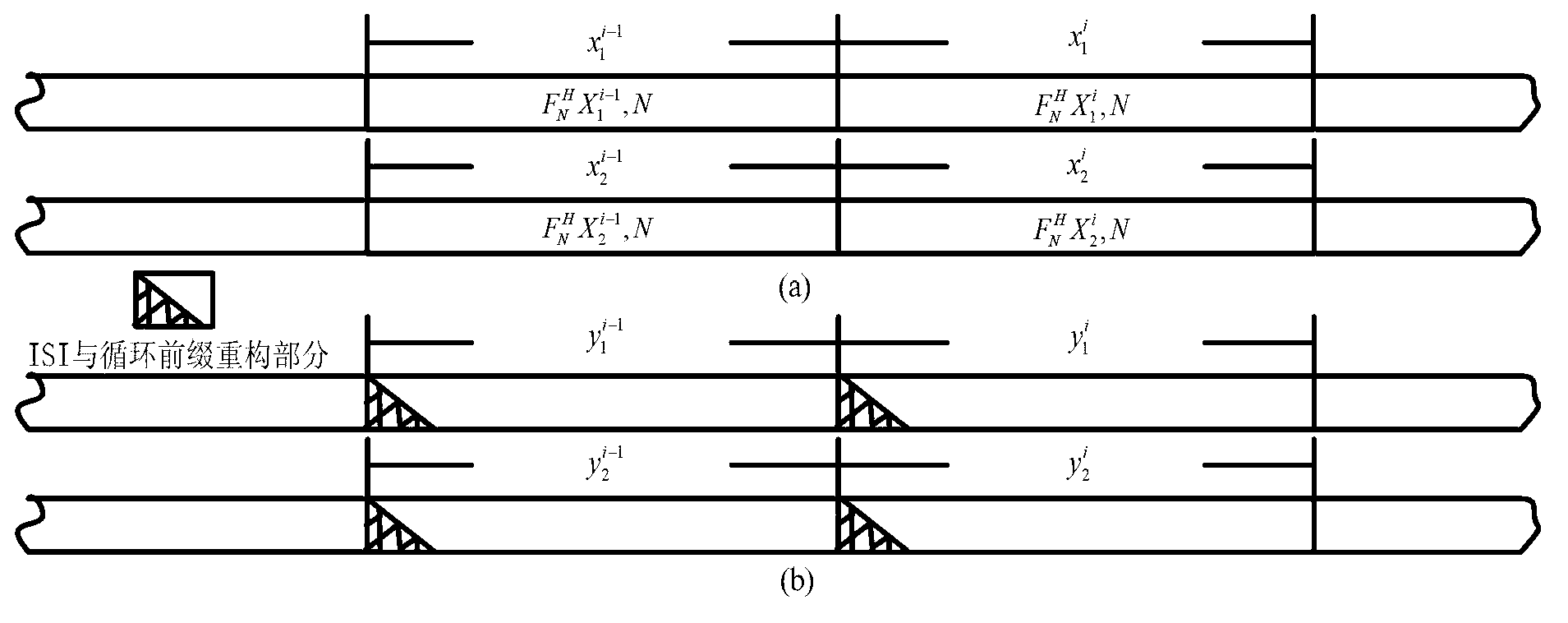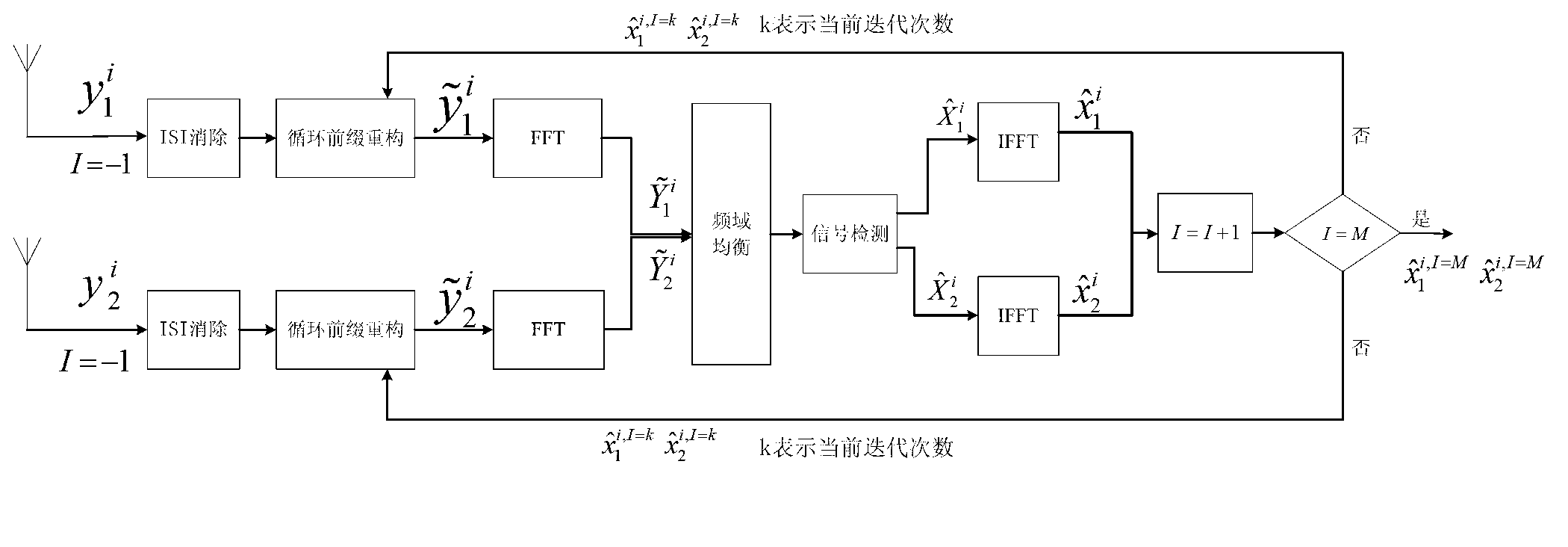Signal detecting method of VBLAST-OFDM system under condition of shortage of cyclic prefix
A VBLAST-OFDM, cyclic prefix technology used in wireless and mobile communications
- Summary
- Abstract
- Description
- Claims
- Application Information
AI Technical Summary
Problems solved by technology
Method used
Image
Examples
Embodiment Construction
[0065] Below in conjunction with specific parameters, the VBLAST-OFDM symbol detection method under the absence of the above-mentioned cyclic prefix proposed by the present invention is described:
[0066] The parameters of the VBLAST-OFDM system in this example are set as follows: set the antenna parameters as two transmissions and two receptions, the signal modulation method adopts QPSK modulation, the total number of subcarriers N=1024, and the subcarrier numbers are [0,1,2,.... ,1023]. The channel parameters selected in this example are as follows: the spatial channels use independent Rayleigh fading channels, each channel uses a COST207TU channel, and the multipath delays are [0, 0.2, 0.5, 1.6, 2.3, 5]us, multi- The path fading powers are [3, 0, 5, 6, 8, 10] dB respectively, the normalized Doppler spread value is 0.001, and the system sampling period T=1.0e-7s. Then the normalized channel maximum multipath delay (the number of multipath channels) L=5.0e-6 / T=50.
[0067]...
PUM
 Login to View More
Login to View More Abstract
Description
Claims
Application Information
 Login to View More
Login to View More - R&D
- Intellectual Property
- Life Sciences
- Materials
- Tech Scout
- Unparalleled Data Quality
- Higher Quality Content
- 60% Fewer Hallucinations
Browse by: Latest US Patents, China's latest patents, Technical Efficacy Thesaurus, Application Domain, Technology Topic, Popular Technical Reports.
© 2025 PatSnap. All rights reserved.Legal|Privacy policy|Modern Slavery Act Transparency Statement|Sitemap|About US| Contact US: help@patsnap.com



